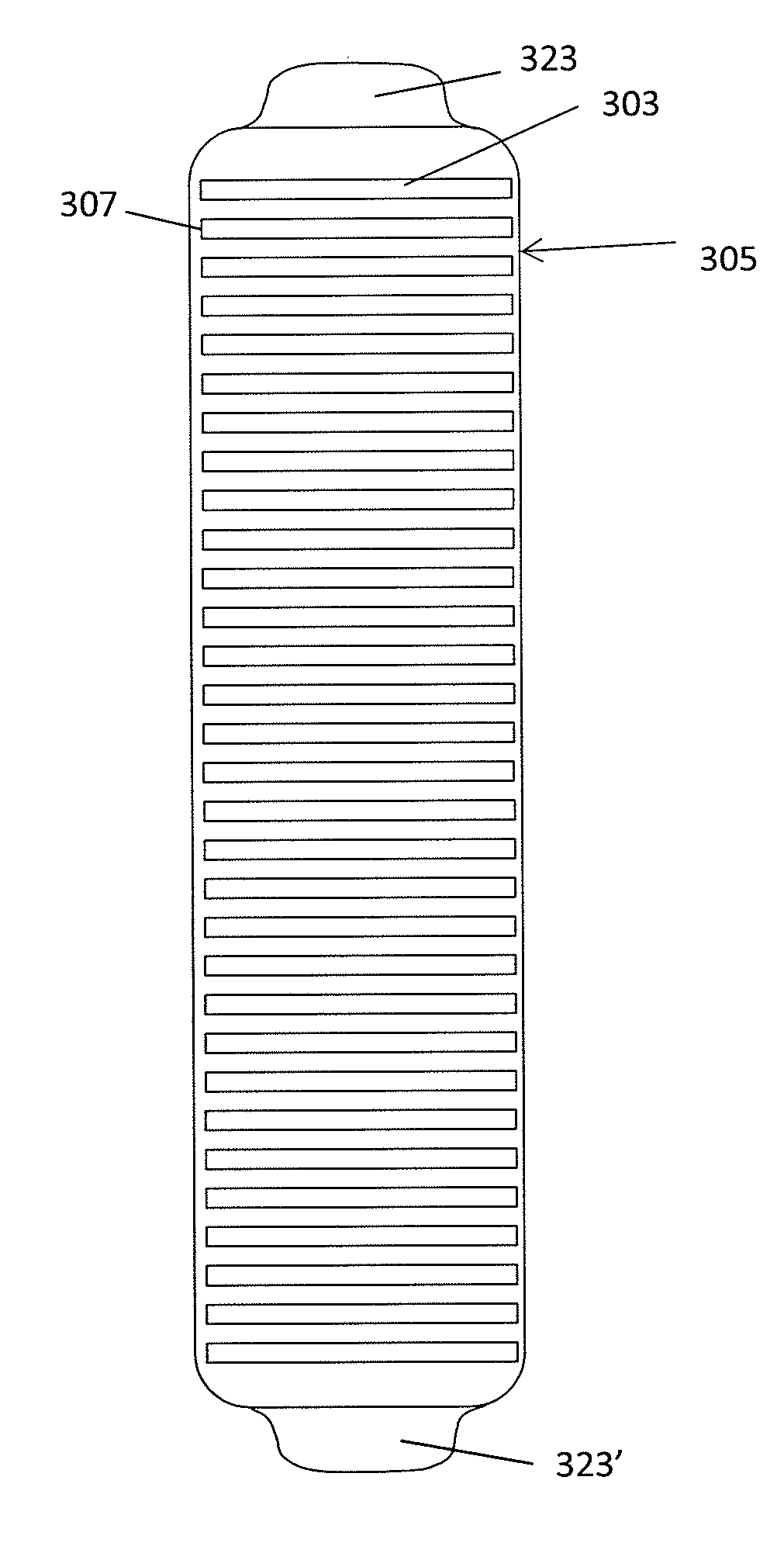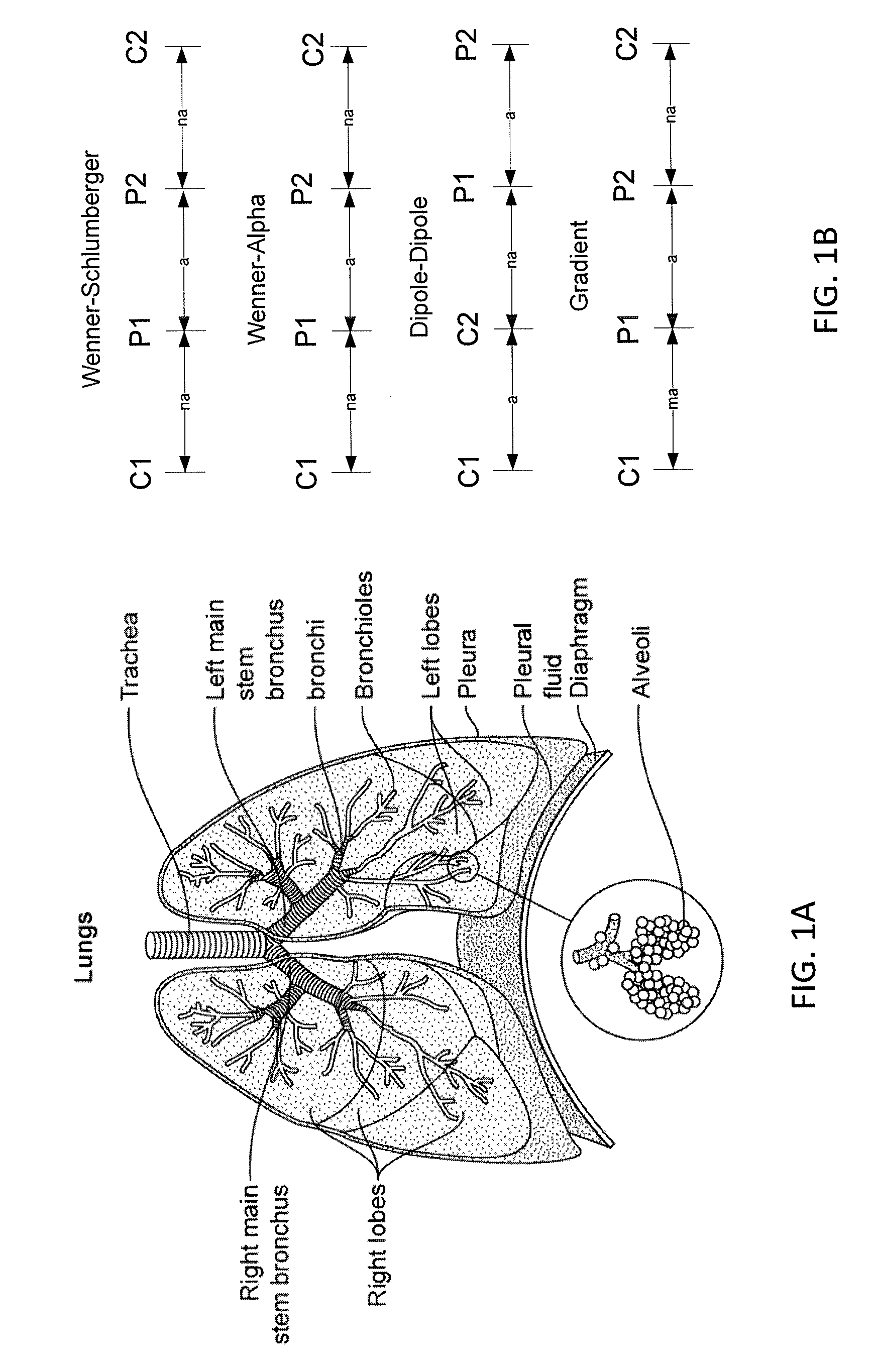Apparatuses for home use in determining tissue wetness
a tissue wetness and tissue technology, applied in the field of noninvasive tissue wetness determination, can solve the problems of muscle aches and pains, affecting the brain, and dehydration reducing cognitive and physical work capabilities, and achieve the effect of convenient us
- Summary
- Abstract
- Description
- Claims
- Application Information
AI Technical Summary
Benefits of technology
Problems solved by technology
Method used
Image
Examples
Embodiment Construction
[0125]The apparatuses (e.g., devices and systems) and methods described herein allow non-invasive determination of one or more measures of soft tissue hydration which is largely indifferent to body habitus (e.g. skeletal and thoracic geometry across subjects). These methods, systems and devices use the change in an electrical parameter within a volume of tissue at different current frequencies, such as the change in resistivity at different frequencies in different sub-regions of the tissue below a sensor placed on the skin surface, to determine tissue wetness. This “frequency response” of the sub-regions of tissue may therefore indicate wetness. In particular, the change in resistivity at different frequencies in different sub-regions of the tissue will depend on the water content of the tissue. Conceptually, water (e.g., saline) has a frequency response of resistivity (a change in resistivity at different applied current frequencies) that is relatively flat, e.g., zero. Soft tissu...
PUM
 Login to View More
Login to View More Abstract
Description
Claims
Application Information
 Login to View More
Login to View More - R&D
- Intellectual Property
- Life Sciences
- Materials
- Tech Scout
- Unparalleled Data Quality
- Higher Quality Content
- 60% Fewer Hallucinations
Browse by: Latest US Patents, China's latest patents, Technical Efficacy Thesaurus, Application Domain, Technology Topic, Popular Technical Reports.
© 2025 PatSnap. All rights reserved.Legal|Privacy policy|Modern Slavery Act Transparency Statement|Sitemap|About US| Contact US: help@patsnap.com



